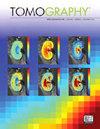The Role of Major Salivary Gland Ultrasound in the Diagnostic Workup of Sicca Syndrome: A Large Single-Centre Study
IF 2.2
4区 医学
Q2 RADIOLOGY, NUCLEAR MEDICINE & MEDICAL IMAGING
引用次数: 0
Abstract
(1) Objective: To determine the diagnostic accuracy of major salivary gland ultrasonography (SGUS) in primary Sjogren’s syndrome (SS), we used the Outcome Measures in Rheumatology Clinical Trials (OMERACT) scoring system on a large single-centre cohort of patients with sicca syndrome. (2) Method: We retrospectively collected the clinical, imaging and serological data of all the patients referred with a suspicion of SS who underwent SGUS and minor salivary glands biopsy. (3) Results: A total of 132 patients were included. The SGUS scores were correlated between the two sides (p < 0.001). The diagnostic cut-off for SS (AUROC: 0.7408) was 6 for the SGUS-global sum (sensitivity: 32.43%; specificity: 96.84%). The cut-off with the highest specificity for SS diagnosis was 7. In the patients with a final diagnosis of SS, the mean SGUS score was significantly higher (p < 0.001) than that of the non-SS patients (3.73 vs. 1.32 for the SGUS-global sum). A significant correlation was demonstrated between the SGUS scores and final SS diagnosis (p < 0.001), biopsy positivity (p < 0.001), ANA positivity (p = 0.016), Ro-SSA positivity (p = 0.01), and gland fibrosis (p = 0.02). (4) Conclusions: SGUS, using the OMERACT scoring system, has moderate sensitivity and high specificity for the diagnosis of SS. The scoring showed a strong and direct correlation with all the clinical hallmarks of SS diagnosis, such as the positivity of a labial salivary gland biopsy, ANA and Ro-SSA statuses, and salivary gland fibrosis. Because of its high specificity, a SGUS-global score > 6 could be therefore employed for the diagnosis of SS in the case of ANA negativity or the unavailability of a biopsy.主要唾液腺超声在睑板腺综合征诊断工作中的作用:大型单中心研究
(1) 目的:为了确定主要唾液腺超声检查(SGUS)对原发性斯约格伦综合征(SS)的诊断准确性,我们在一个大型单中心斯卡综合征患者队列中使用了风湿病学临床试验结果测量(OMERACT)评分系统。(2)方法:我们回顾性地收集了所有疑似 SS 患者的临床、影像学和血清学数据,这些患者均接受了 SGUS 和小唾液腺活检。(3)结果:共纳入 132 例患者。双方的 SGUS 评分存在相关性(P < 0.001)。SS的诊断临界值(AUROC:0.7408)为SGUS总和6(敏感性:32.43%;特异性:96.84%)。在最终确诊为 SS 的患者中,SGUS 平均得分显著高于非 SS 患者(SGUS-全球总和为 3.73 vs. 1.32)(p < 0.001)。SGUS 评分与 SS 最终诊断(p < 0.001)、活检阳性(p < 0.001)、ANA 阳性(p = 0.016)、Ro-SSA 阳性(p = 0.01)和腺体纤维化(p = 0.02)之间存在明显相关性。(4) 结论:采用 OMERACT 评分系统的 SGUS 对 SS 的诊断具有中度敏感性和高度特异性。该评分与 SS 诊断的所有临床特征(如唇唾液腺活检阳性、ANA 和 Ro-SSA 状态以及唾液腺纤维化)都有很强的直接相关性。由于 SGUS 全球评分的特异性很高,因此在 ANA 阴性或无法进行活检的情况下,SGUS 全球评分大于 6 分可用于 SS 的诊断。
本文章由计算机程序翻译,如有差异,请以英文原文为准。
求助全文
约1分钟内获得全文
求助全文
来源期刊

Tomography
Medicine-Radiology, Nuclear Medicine and Imaging
CiteScore
2.70
自引率
10.50%
发文量
222
期刊介绍:
TomographyTM publishes basic (technical and pre-clinical) and clinical scientific articles which involve the advancement of imaging technologies. Tomography encompasses studies that use single or multiple imaging modalities including for example CT, US, PET, SPECT, MR and hyperpolarization technologies, as well as optical modalities (i.e. bioluminescence, photoacoustic, endomicroscopy, fiber optic imaging and optical computed tomography) in basic sciences, engineering, preclinical and clinical medicine.
Tomography also welcomes studies involving exploration and refinement of contrast mechanisms and image-derived metrics within and across modalities toward the development of novel imaging probes for image-based feedback and intervention. The use of imaging in biology and medicine provides unparalleled opportunities to noninvasively interrogate tissues to obtain real-time dynamic and quantitative information required for diagnosis and response to interventions and to follow evolving pathological conditions. As multi-modal studies and the complexities of imaging technologies themselves are ever increasing to provide advanced information to scientists and clinicians.
Tomography provides a unique publication venue allowing investigators the opportunity to more precisely communicate integrated findings related to the diverse and heterogeneous features associated with underlying anatomical, physiological, functional, metabolic and molecular genetic activities of normal and diseased tissue. Thus Tomography publishes peer-reviewed articles which involve the broad use of imaging of any tissue and disease type including both preclinical and clinical investigations. In addition, hardware/software along with chemical and molecular probe advances are welcome as they are deemed to significantly contribute towards the long-term goal of improving the overall impact of imaging on scientific and clinical discovery.
 求助内容:
求助内容: 应助结果提醒方式:
应助结果提醒方式:


